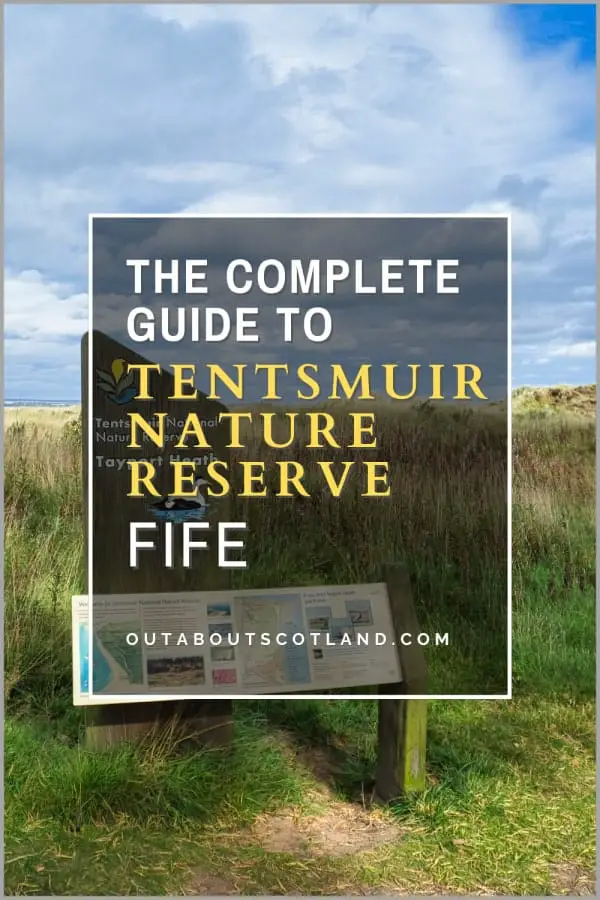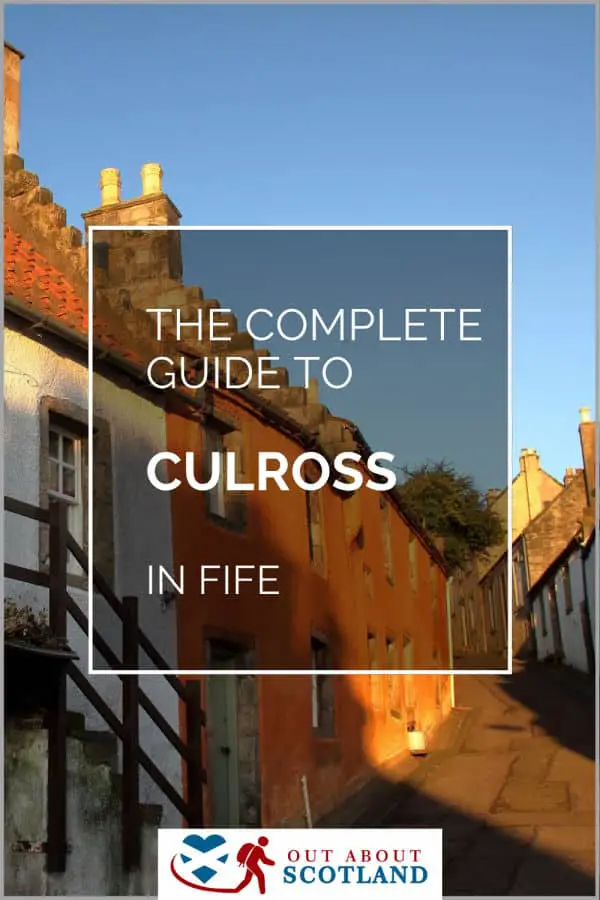Aberdour Castle is located in the village of Aberdour in Fife. It’s one of the oldest standing stone castles in Scotland, dating back to the 12th century, and features a delightful walled garden, a beautiful 17th-century gallery, and a beehive-shaped dovecot which is said to have housed 600 pigeons.
The garden offers a sanctuary of peace and tranquilly with its varied array of plants and flowers, making it a great place for families to explore and enjoy the stunning views of the Firth of Forth. The castle is managed by Historic Environment Scotland and is open to the public for self-guided tours
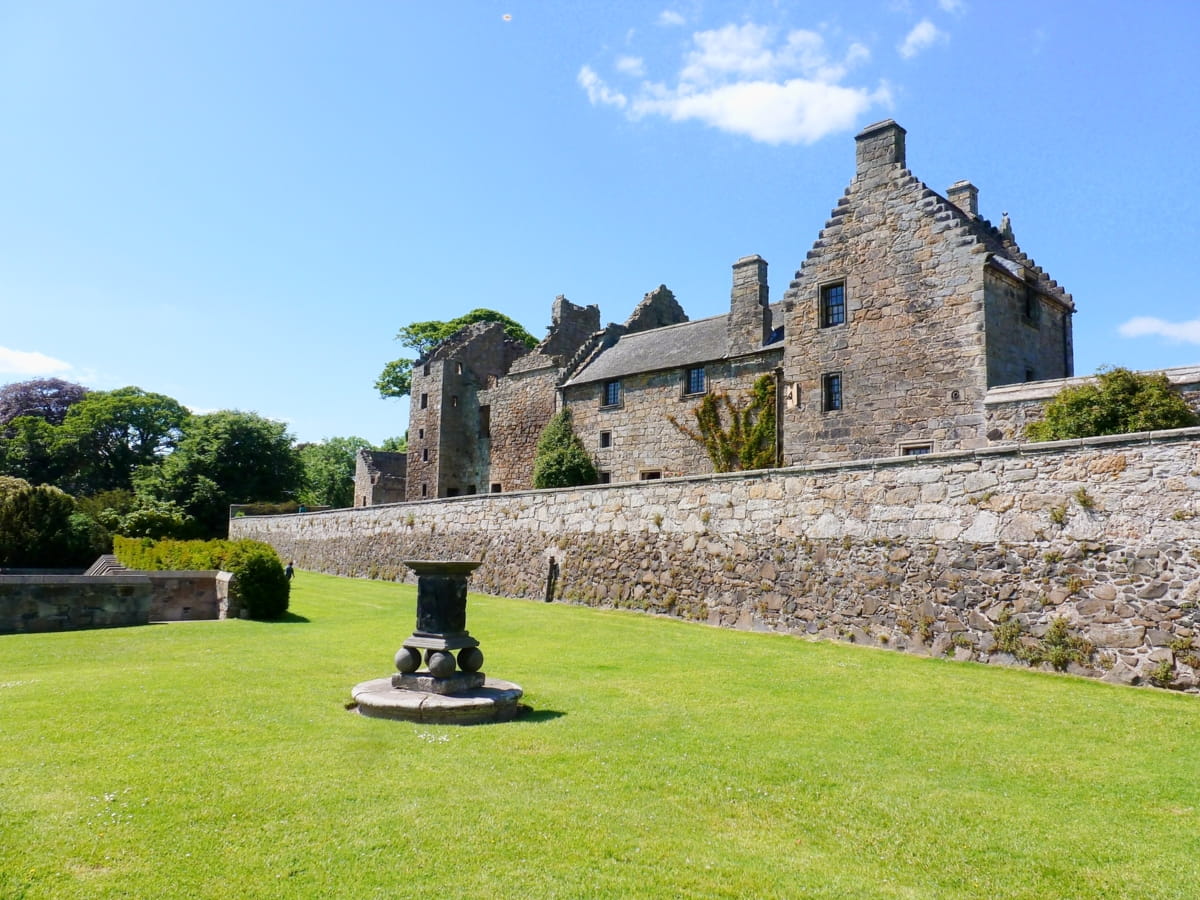
| Address: | Aberdour, Fife, KY3 0SL |
| Opening Hours: | 1 April - 30 September: Mon - Sun 9:30 - 17:30, (last entry 16:30). 1 October - 31 October: Mon - Sun 10:00 - 16:00, (last entry 15:30). 1 November - 31 March: Sat - Wed 10:00 - 16:00 (last entry 15:30). |
| Admission Price: | Adult £6 Concession £4.80 Children 5 - 15 £3.60 Under 5's Free |
| Parking: | Free on-site parking. |
| Contact: | 01383 860 519 |
| Facilities: | Cafe, gift shop, toilets, disabled access, bike racks, picnic area, water refill. |
| Photos: | Virtual Tour YouTube Video |
Overview
Aberdour Castle is located in the village of Aberdour in Fife and is notable for being one of the oldest masonry castles that’s still standing in Scotland. Built in the early 1100s, the castle surrounds a hall house that was gradually extended over many centuries. Although a large portion of the early structure is in ruin, the later complex of buildings is in remarkably good condition thanks to the efforts of Historic Environment Scotland (HES), which now maintains it.
As the castle is so close to Edinburgh, it’s an easy journey across the Forth Road Bridge to get to this historic building, so if you’re in the Edinburgh area there’s no reason why you couldn’t include Aberdour in your itinerary. But there’s more to this attraction than history, and a visit is worth the journey not only for the castle but also for the manicured gardens that surround it.
There’s a fragrant walled garden to the east and an equally nice terraced garden to the south (both of which offer lovely views across the Firth of Forth) with a tabled seating area that practically begs visitors to whip out their cheese sarnies for a summer picnic.
If you’re a fan of the Outlander TV series, you have another reason to visit Aberdour, as it was the setting for Sainte Anne de Beaupré’s monastery in France in the last episode of season one, where the Old Kitchen and Long Gallery were both used as filming locations. This part of Fife has several filming locations where you can follow in the footsteps of Clare and Jamie (like Culross), and the official Visit Scotland website has a very good location map if you want to include Aberdour in an Outlander tour.
Next door to Aberdour Castle is St. Fillan’s Church, which is another mediaeval building that’s worth taking a peek inside. Also built during the 1100s, St. Fillan’s Church offers great views across the Firth of Forth towards Edinburgh, with the rising Pentland Hills nestled on the skyline behind the city. Once you’ve had enough of history and have taken photos of the scenery, you can head back to the castle for a light lunch in the on-site café which overlooks the terrace.
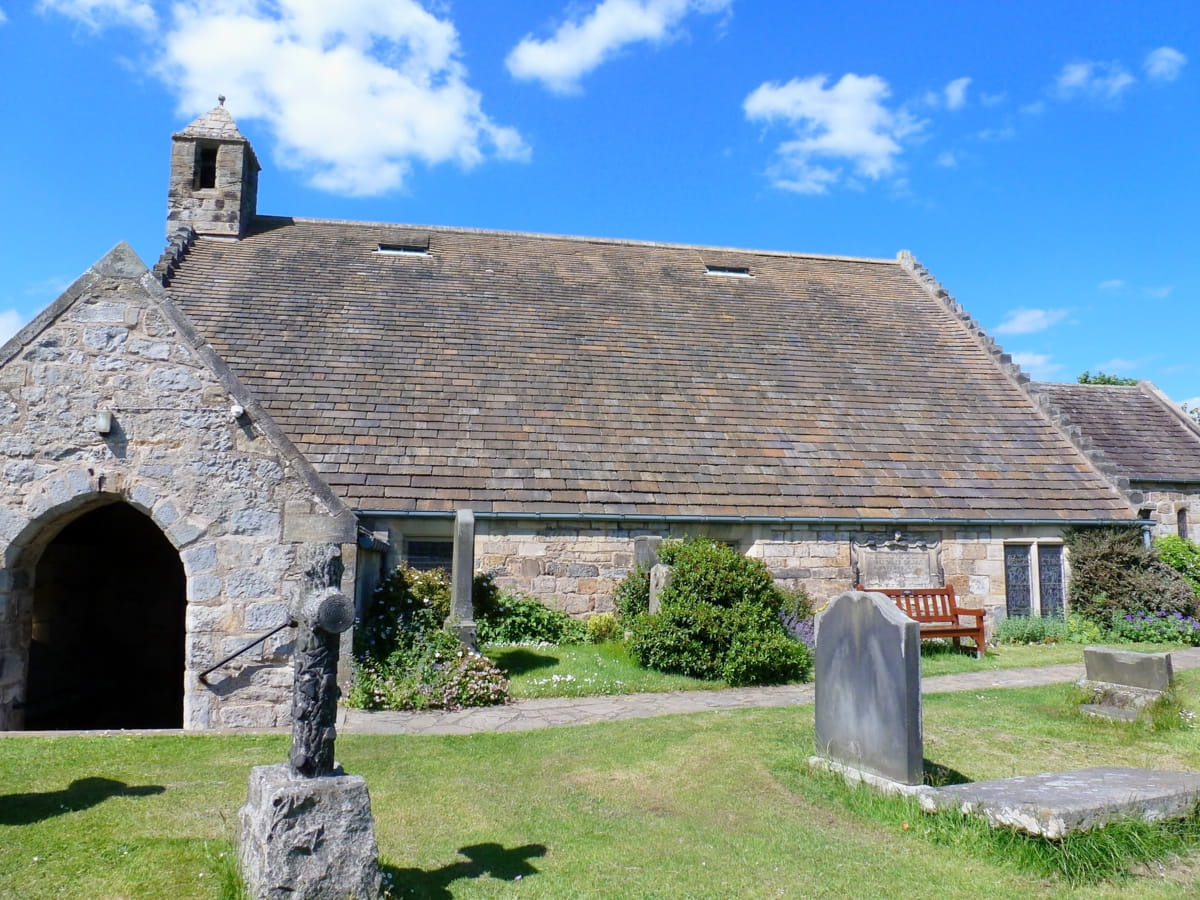
The Highlights
1: Aberdour Castle is one of the oldest stone castles in Scotland, dating back to the 12th century. Its rich history involves several noble families, and it played a role in many significant historical events.
2: The castle is renowned for its beautiful terraced gardens, which include a 17th-century walled garden and a dovecot considered to be one of Scotland’s oldest.
3: The castle has been a filming location for several popular TV shows, including the historical drama ‘Outlander’. Fans of the show will enjoy recognizing various parts of the castle from key scenes.
Visiting Tips
1: After visiting Aberdour Castle, check out the nearby Aberdour Silver Sands beach, which overlooks Inchcolm Island.
2: Alternatively, you might consider driving to Dunfermline, which is by far the best option for food. Dunfermline was given city status in 2022, partly because it’s the location of the historic Dunfermline Abbey.
3: Visitors can enter Aberdour Castle and hundreds of other historic sites for free by joining Historic Environment Scotland.
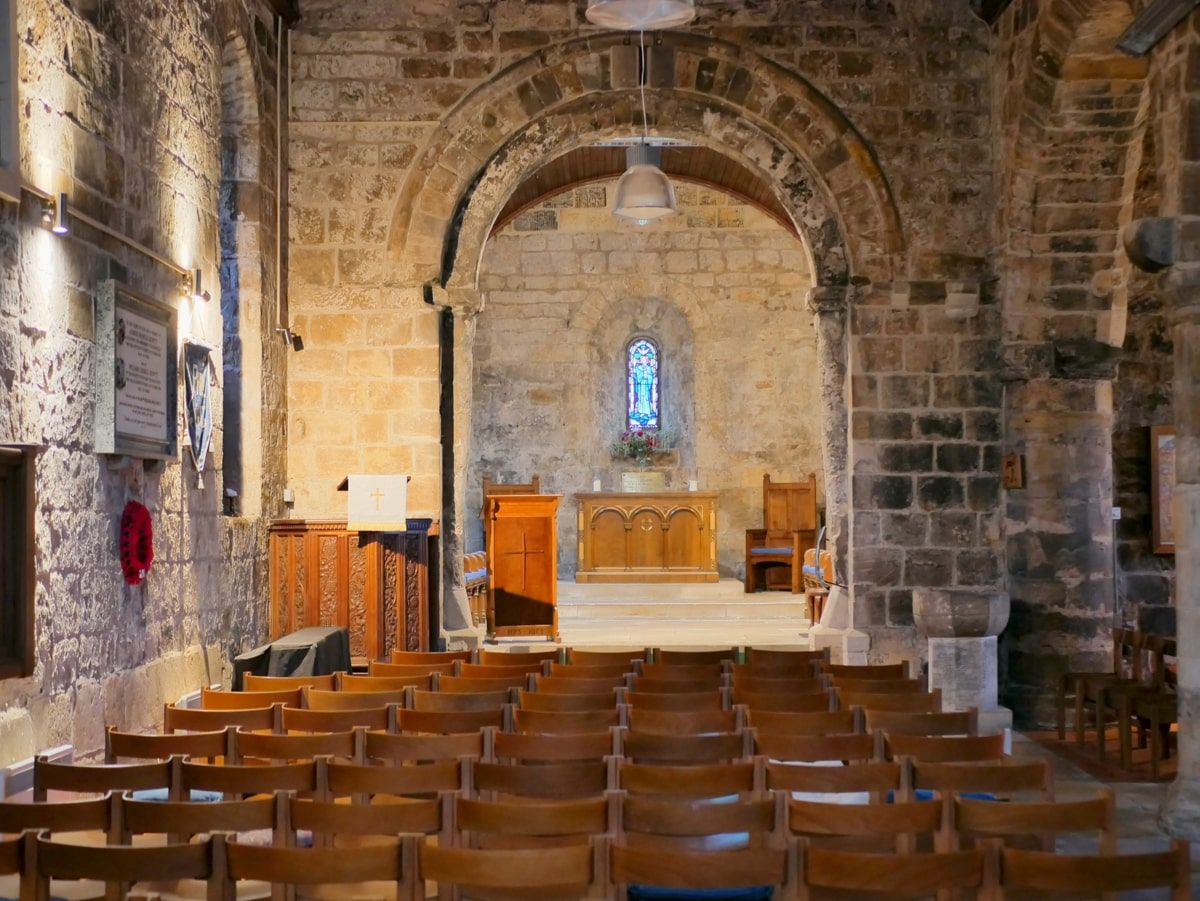
Tourist Information
Although Aberdour Castle isn’t particularly big, there are more than enough activities to keep a family occupied for a few hours thanks to the gardens and church, but you’ll probably want to start your visit with a walk around the hall house. This is one of the oldest surviving structures of its kind in Scotland (the other is Castle Sween in Argyll), and there are some interesting points of interest to take note of as you make your way around it.
There’s an impressive painted ceiling in the east range that dates all the way back to the early 1600s, and if you move into the Long Gallery, you’ll get a good insight into how mediaeval Scottish castles would have looked back in the day. Although it’s quite sparse inside, HES did a good job renovating it, and through the information panels they installed, you can get a good idea of what life was like 900 years ago.
Unfortunately, not all of the castle complex is in such good condition, and a large part of the original tower house is in ruin due to a fire that ravaged the building in the 1680s. Next to this ruined tower are two gardens, both of which offer a pleasant short walk.
The terraced garden is formed by four L-shaped levels connected by steps, with the the upper terrace being home to the enormous beehive-shaped dovecote that was once used to keep the pigeons that fed the castle’s occupants. This dovecot is enormous – one of the biggest in Scotland – and has over 600 nesting boxes inside it!
The walled garden to the east features a small orchard, and it also partially encloses St. Fillans Church where you’ll be presented with magnificent views of the Firth of Forth – as long as the haar hasn’t rolled in. If you’re not aware, a haar is a Scots word for a thick, cold mist that rolls inland off a body of water, which is something that frequently happens along this stretch of coastline.
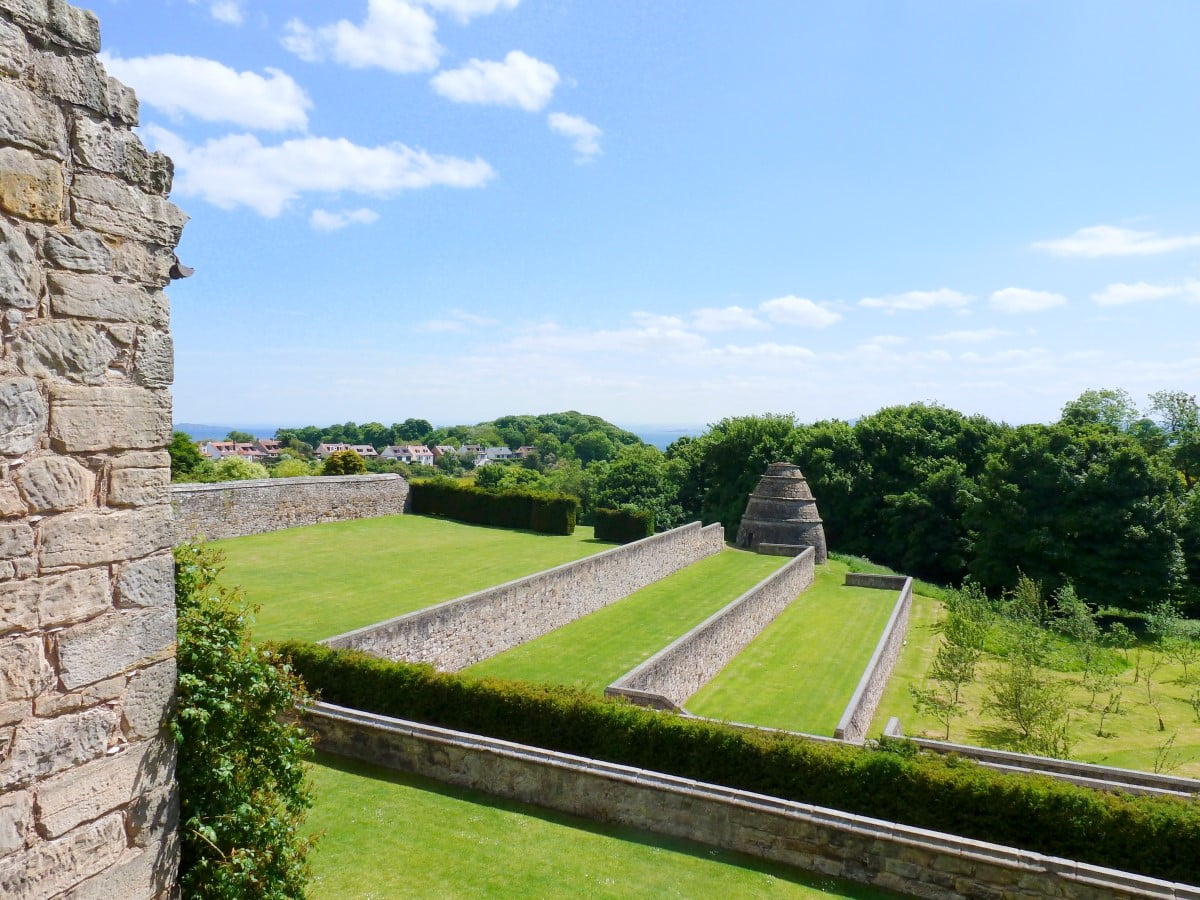
History
The earliest part of the castle is the hall house, which was built in the 1100s by Sir Alan de Mortimer who acquired the barony of Aberdour in the early part of the century. Although there’s no record of what became of the de Mortimers, historians know that Robert the Bruce granted Aberdour to Thomas Randolph, the Earl of Moray, in 1325 as a gift for his service during the Scottish Wars of Independence.
The Randolphs then kept Aberdour in their possession for the next two generations until they granted it to Sir William Douglas in 1351. At this time, Sir Douglas already had a residence in Dalkeith, so Aberdour was only used as a second home. However, the rising power of the Douglas’s meant they could afford to expand on the original tower house by building new stair towers and an extension to the south block.
The Douglas’s continued to use Aberdour as a joint seat of barony alongside Dalkeith for several hundred years, and with their increasing fortune came even more extensions to the castle, including the central range in the 1500s and the east range in the 1600s.
The decline of the Douglas family began with William Douglas in the 17th century, when mounting interest on loans caused the family to fall heavily into debt. After a catastrophic fire broke out in 1688, they found themselves unable to repair the buildings, so in 1725 they moved out and never returned. Thankfully, Aberdour was placed into state care in the early 1900s and is now listed as Category A, which means it has the highest level of protection for a building in Scotland.
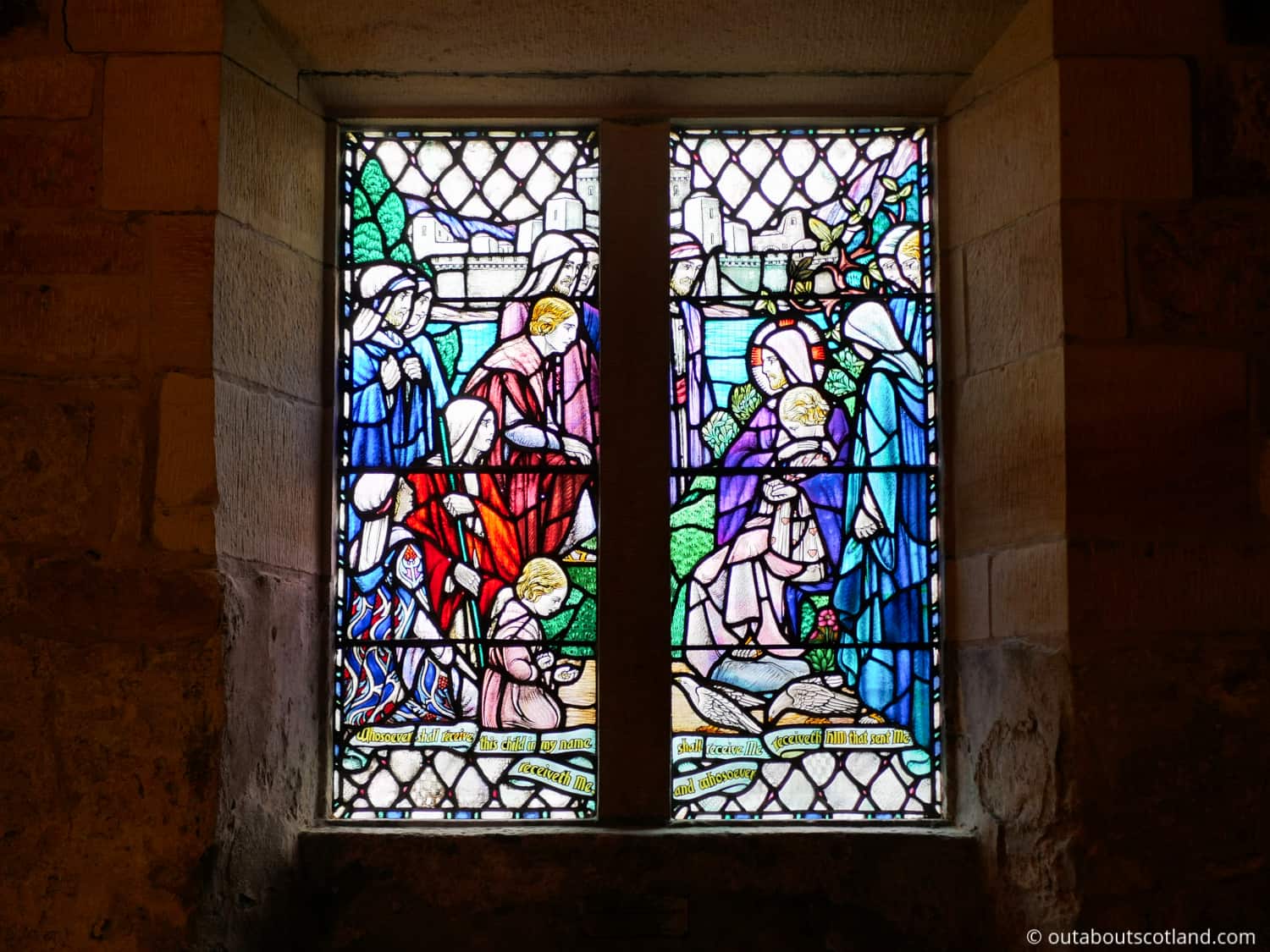
Things to Do
Castle Exploration: Discover the fascinating history of Aberdour Castle, one of the oldest stone castles in Scotland. Explore the grand hall, the medieval kitchen, and the painted ceiling in the east range. Marvel at the architectural evolution of the castle as it expanded from a simple tower house into a sprawling fortification over many centuries.
Learn History: Browse the exhibitions to learn about the castle’s history, the wealthy families who owned it, and how life was lived there in the past. If you’d like to get actively involved in Scotland’s past I recommend attending one of the castle’s performances where costumed characters bring history to life. See the Aberdour Castle website for the latest schedule.
Garden Stroll: Immerse yourself in the beauty of Aberdour Castle’s terraced gardens and orchards. The garden is a haven of tranquillity and is the perfect spot for a family picnic.
Photography Session: Capture the perfect shot of this picturesque castle and its surroundings. With its near-1,000-year-old architecture and pretty gardens, Aberdour Castle provides an endless source of inspiration for both amateur and professional photographers alike.
St. Fillans Church: The castle grounds are home to a 900-year-old church with gorgeous views overlooking the Firth of Forth. Absorb the atmosphere of the building and admire the stained glass windows inside and the atmospheric graveyard outside.
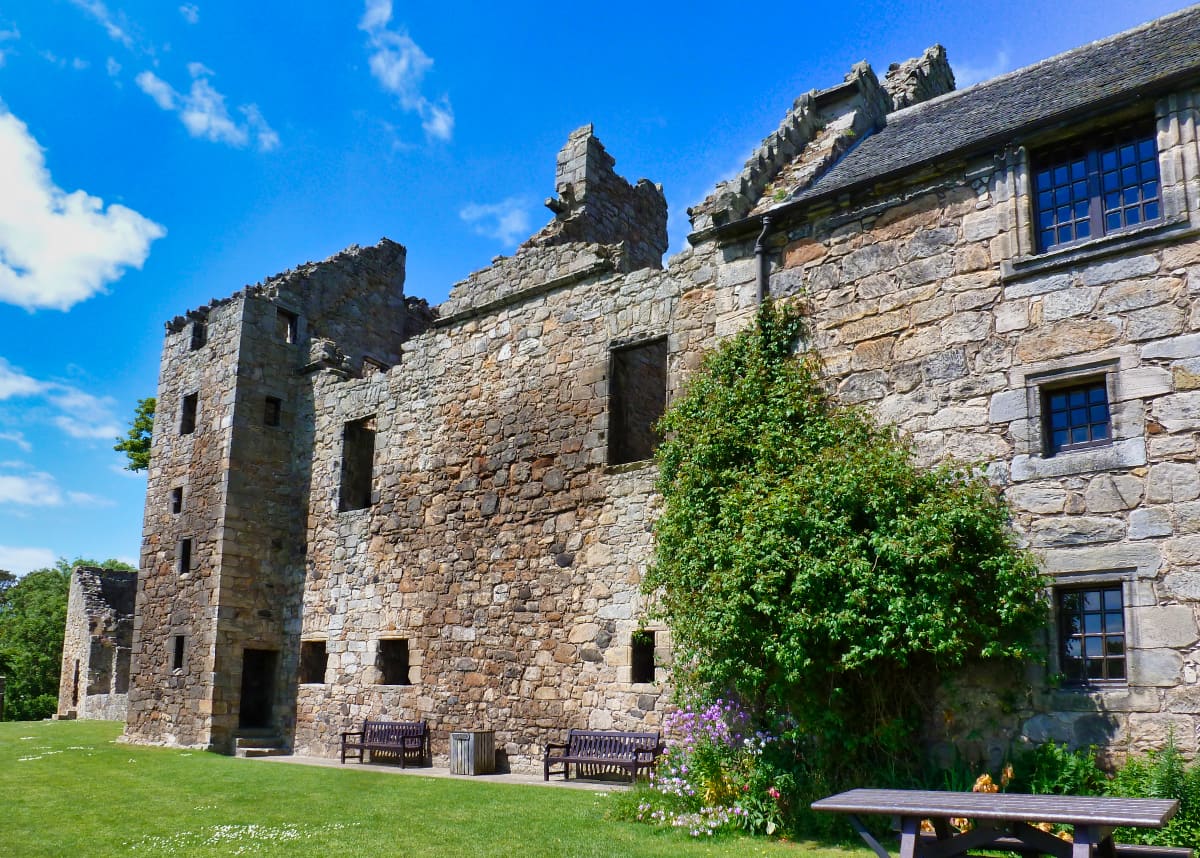
Things to Do Nearby
Dunfermline Abbey. St Margaret’s Street, Dunfermline KY12 7PE. 18-minute drive.
One of the largest abbeys in Scotland, Dunfermline Abbey is known as the burial site for many of Scotland’s ancient kings. There are several attractions nearby including the Abbot House Museum, Pittencrieff Park and the Andrew Carnegie Museum.
Braefoot Bay. Burntisland KY3 0XR. 15-minute drive.
A local coastal nature reserve that features a footpath around Dalgety Bay. Both walkers and mountain bikers frequently use the path. The bay is the nearest point to Inchcolm Island.
Silver Sands Beach. Firth of Forth, Burntisland KY3 0RQ. 3-minute drive.
A golden-sand beach to the east of Aberdour. There is a path from the beach that closely follows the coastline to Burntisland.
Fife Coastal Path. N Overgate, Kinghorn KY3 9SY. 14-minute drive.
The Fife Coastal Path is a 187 km footpath that begins in Kincardine and finishes in Newburgh. The section that starts at Kinghorn offers picturesque views across the North Sea before winding its way to the large town of Kirkaldy.
Cullaloe Nature Reserve. B9157, Burntisland KY3 0LU. 4-minute drive.
This nature reserve centres around a reclaimed reservoir that is a haven for birds including lapwings and sedge warblers. There are areas of wildflower meadows, marshland and willow scrub. There is also a wildlife viewing screen with wheelchair access.
Frequently Asked Questions
Is Aberdour Castle worth visiting?
Yes, Aberdour Castle is well worth a visit. As one of the oldest standing castles in Scotland, it’s a treasure trove of history that dates back to the 12th century.
Aberdour Castle is split into two sections: the original hall house, which is one of the oldest stone castles in Scotland, and the later, more refined Renaissance building. The castle also boasts beautiful terraced gardens and an orchard.
Visitors can explore the medieval kitchen and the grand hall, stroll through the walled garden, and visit St. Fillan’s Church, which is located on the castle grounds.
Who lived in Aberdour Castle?
Aberdour Castle in Easter Aberdour, Fife, served as the residence of several powerful families including the Mortimer’s, the Randolph’s, and the Douglas’s.
Is there parking at Aberdour Castle?
There is a small car park next to the visitor centre at the entrance to Aberdour Castle, as well as a large car park at Aberdour railway station.
Who built Aberdour Castle?
Aberdour Castle was built by the Douglas Earls of Morton, initially as a two-storey tower house, in the 1100s. The castle is one of the oldest freestanding castles in Scotland.




